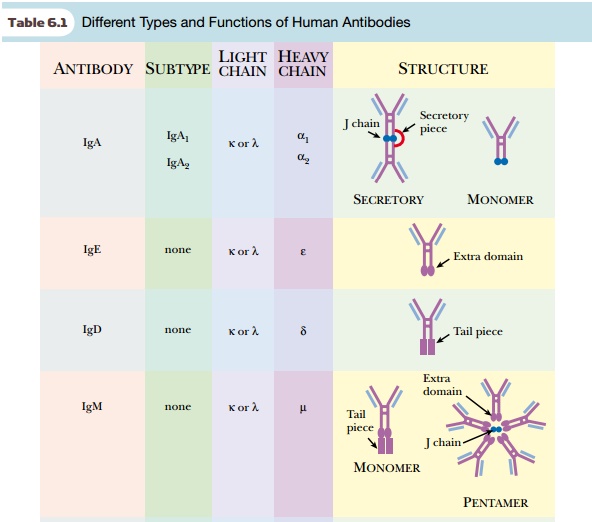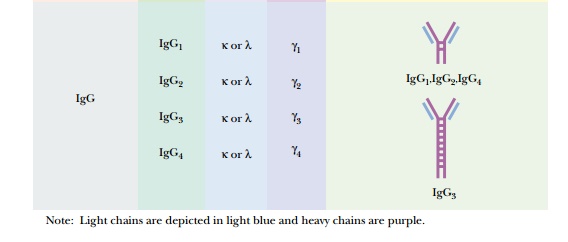Chapter: Biotechnology Applying the Genetic Revolution: Immune Technology
Structure and Function of Immunoglobulins
STRUCTURE
AND FUNCTION OF IMMUNOGLOBULINS
Depending on the type of
heavy chain, antibodies are categorized into different classes, and assume
different roles in the immune system (see Table 6.1). The most abundant and
typical antibody has a gamma heavy chain and is called immunoglobulin G (IgG). IgG has four different subclasses, but as a
whole, IgG is found mainly in blood serum. About 75% of the serum antibodies
are IgG, and these are critical to stimulate immune cells to engulf invading
pathogens. IgG is the only antibody able to transfer across the placenta during
pregnancy. The second most common antibody in serum is secretory IgA. This
antibody is also found in mucosal secretions as well as colostrum and breast
milk. It is extremely important in fighting respiratory and gastrointestinal
infections, especially in infants, where gastrointestinal illnesses are
particularly deadly. The third most common is IgM, which is usually found as a
pentamer. The unusual structure of IgM provides multiple binding sites for
antigens (10 in IgM versus two in IgG). This structure makes IgM good for
clumping microorganisms, and then stimulating immune cells to digest the entire
complex. IgD is found at low levels, and its role is still uncertain. IgE is
the least common antibody in serum and is primarily found


attached to mast cells. IgE
is the antibody that stimulates allergic responses by releasing the histamines
that cause all the common symptoms of allergies, including runny noses,
sneezing, and coughing.
Related Topics